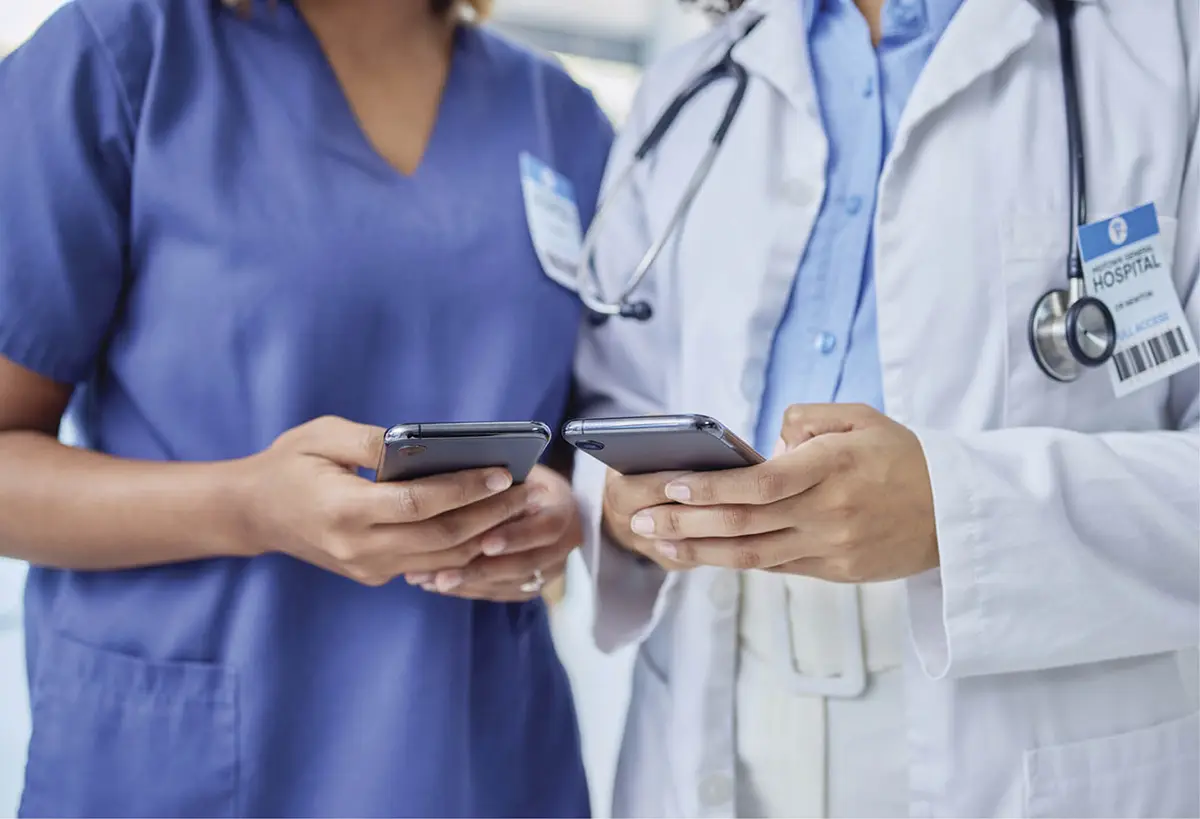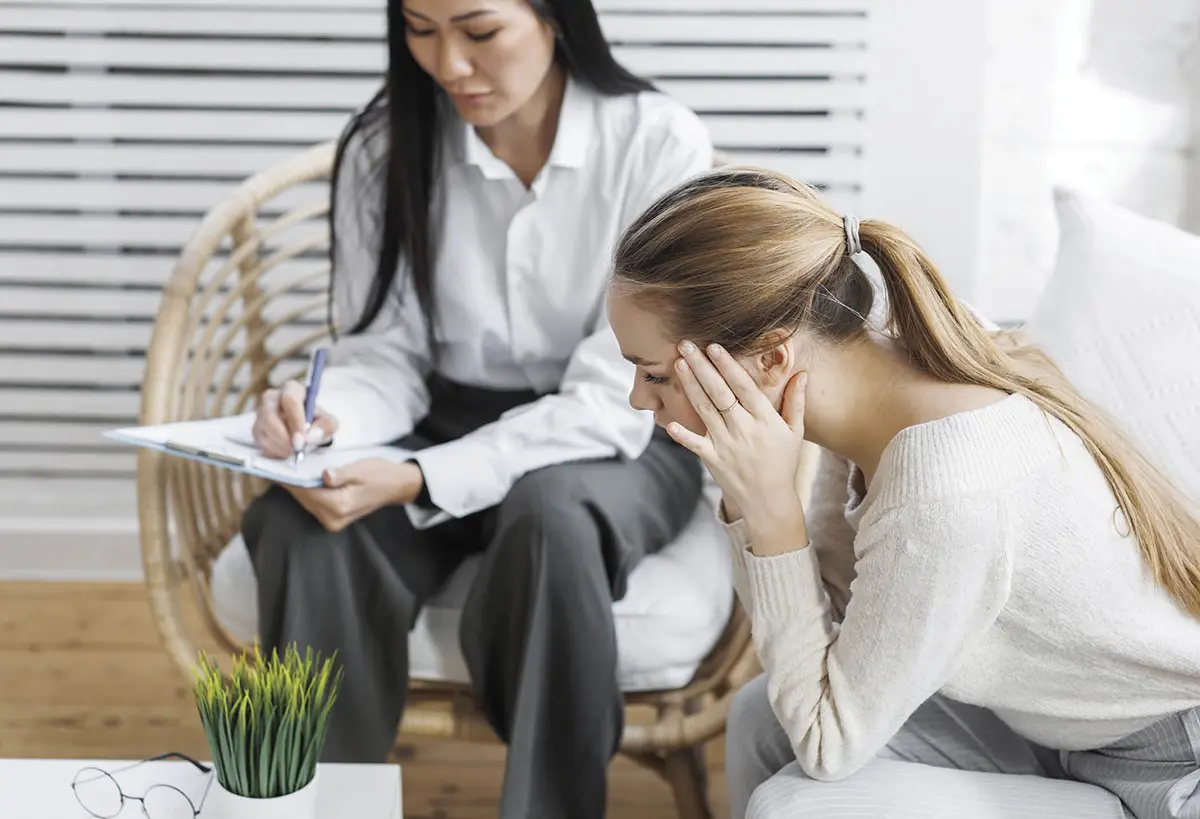any healthcare needs require in-person visits, but some services can be provided by new and developing technology. Alaskans are at the forefront of exploring some of the technological solutions that are helping people meet their health needs in a timely, affordable way.
In the December issue of Alaska Business, Jacqueline Summers, executive director of Health TIE, introduced readers to the Alaska-based healthcare innovation hub aimed at bringing change makers together. Health TIE focuses on four primary sectors: behavioral health, intellectual and developmental disabilities, senior care, and substance use disorders. Collaborating with entrepreneurs who are developing innovative solutions to these sectors through technology, Health TIE creates spaces for cross-networking providing an invaluable service to these changemakers.
Here, then, are some of the innovators testing healthcare technologies in Alaska.
By creating the Step Away app, Dulin hopes to give people suffering from alcohol addiction a convenient and affordable way to develop awareness and the motivation necessary to make a change. “What we’ve seen so far is the app reaches people who wouldn’t otherwise get any help at all,” says Dulin. “Working mothers who have no time to schedule regular in-person therapy sessions, people who are reluctant to admit to others that they have a problem, and individuals who can’t afford in-person therapy can receive the guidance necessary to make positive changes through the use of the app.”
The app’s design is multifaceted. The first step is to help people get an awareness of what kind of problem they have and how severe it is. “Monitoring—how much they drink, when they drink, and why they drink—is one of the most important parts of what the app does,” says Dulin. “Developing awareness and the motivation to make a change are key aspects of changing drinking patterns.”

The app can be downloaded and used for free for a week. Users are then charged a $5 fee monthly. “This is very affordable for a lot of people, but in some cases, even $5 presents a barrier,” says Dulin. “Organizations can buy a package and distribute it for free to their users, and we’re hoping to see more of that going forward.”
Health TIE connected Dulin to Recover Alaska, a statewide alcohol education and advocacy initiative, and it is also working with Dulin to integrate Step Away into established treatment programs.
“I read a statistic that 11.6 percent of the working population in my city misuses or abuses opioids,” says Reeser. “That caught my attention and captured my heart, and I wanted to become part of the solution.” Reeser sold his IT company and went all in on OpiAID.
Drawing from his combined background of spending thirteen years in patient care and recent years in the tech industry, Reeser set out to develop a wrist-worn technology that detects biometric patterns that allow healthcare teams and patients to track in real-time how the patient is adjusting to medications used to aid in the recovery from opioid use disorder (OUD). The information allows clinicians to make timely adjustments to medications and to provide intervention when necessary.

An OpiAID pilot project is currently underway in Alaska. “Working with Alaska MAT [medication addiction treatment] programs, our goal is to expand across the state, offering services to whoever needs it,” says Reeser. “The opposite of addiction is community. OpiAID is building a data bridge to help bring communities together. We want to earn the trust of Alaskan residents and encourage them to ask clinical professionals more about OpiAID. We hope that clinicians will reach out to learn more about the technology when approached by patients for information.”
CEO and co-founder Matt Golden’s motivation for developing MapHabit stems from personal experience. “Matt was motivated by an uncle who had developed Alzheimer’s,” says Jill Reffett, vice president of business development and reimbursement for MapHabit. “His uncle’s loss of independence had a profound impact on him, beyond the disease. Matt believed that a program designed to help his uncle maintain independence despite his loss of memory would have given him more quality of life.”
In collaboration with co-founder and neuroscience specialist Stuart Zola, Golden’s vision was realized. Based on neuroscience, MapHabit uses technology to produce customized audio and visual maps, including pictures and video, with step-by-step instructions for daily routine tasks. Through step-by-step prompting, developmentally challenged individuals and those suffering from memory loss develop habits that lead to independence.
“Both of my children have Down syndrome, and my oldest has a dual diagnosis of Down syndrome and autism,” shares Reffett. “Our family was part of the study before I joined MapHabit.”
Notable changes realized during the pilot project included higher adaptive behavioral skills and improvements in quality of life relating to the speed and/or ability to complete activities of daily living. Parents noted reduced stress and a decrease in caregiver burden.
A pilot program was recently launched in Alaska and has seen an outpouring of support. “We’re working with numerous agencies to address Alaska’s unique challenges and to secure funding sources within the state to make the program affordable and accessible for all who need it,” says Reffett.
Kastning moved to Anchorage when she was eight months pregnant. “I was not prepared for how lonely life would be with a newborn, no family in town, or having any friends with kids,” she says. “Looking back, I realize how valuable that feeling of security, connection, and support is in a mother’s journey while pregnant and postpartum.”
Brooks is a two-time Olympic cross-country skier. Following her retirement from competition, Brooks turned her attention to becoming a mother. She is now a therapist specializing in athletes’ mental health and maternal mental health. “PMADs are the number one complication of childbirth that no one addresses,” she says. “No one talks about what the transition into motherhood might do to your identity, your body image, or your professional work. We tend to romanticize motherhood and put a lot of pressure on parents.”
Brooks and Kastning designed the Moms Matter Now course to be everything they wish they had as new moms. “The course has thirty videos and is very comprehensive dealing with issues like perfectionism, mom rage, mom guilt, body image, cognitive distortions, and more,” says Brooks. “We spent over a year creating the course with evidence-based material.”
The program was launched in March 2021. “Calisa and I had been thinking about this for a long time, but the pandemic became the catalyst for launching the program,” says Brooks. “Women were becoming mothers in isolation with zero social support.”
The program features more than ten hours of videos for approximately the price of one therapy session. It’s also always accessible, day or night. “We sell direct to consumers, and anyone can buy the course online at any time,” says Brooks. “It’s a perfect baby shower gift—a onesie is great, but the baby will outgrow it in two weeks. This is a sustainable gift.”
A recent grant allowed Brooks and Kastning to gift the program to 250 Alaskans statewide. “Employers can also buy the program for their employees as part of a benefit package and we hope to see that expand,” says Brooks.
Moms Matter Now, MapHabit, OpiAID, and Step Away are just a few of the innovative healthcare enterprises that Health TIE is helping to test in Alaska. Whether boosting ideas that originate within the state or connecting out-of-state developers with Alaska’s health networks, Health TIE is helping to create tools for simpler, cheaper, and more accessible care.